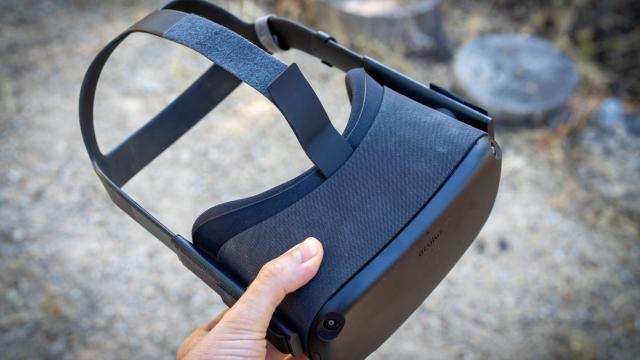For years now it’s seemed that the VR Revolution was just around the corner, but Oculus Quest arrived, and it really is that long-awaited breakthrough product.
The Quest, for those who don’t know, is the first completely standalone system which tracks in six degrees of freedom (6DOF), no computer required. The headset has four cameras on it, which are used for “inside out” tracking, so you don’t need to install anything in your room. Basically, it’s just the headset, a remote control for each hand, and a charging cable. That’s all you need. It offers high-quality VR with incredible games, no wires attached. Take it where ever, clear some space, and you’re good to go.
The Quest is hardly new at this point. In fact, it’s been out for more than a year. But when it launched it didn’t have a ton of games available, and it was a bit light on features. Now there hundreds of games and experiences available, and thanks to monthly firmware updates the Quest now has some killer features, like controller-free hand-tracking, and the ability to connect it to a gaming PC to use it to play some very GPU-intensive games, including the much-hyped Half-Life: Alyx. I spent the last three months testing the Quest exhaustively, as I was completely isolated in lockdown and very, very bored. So here is our long-overdue deep-dive review.
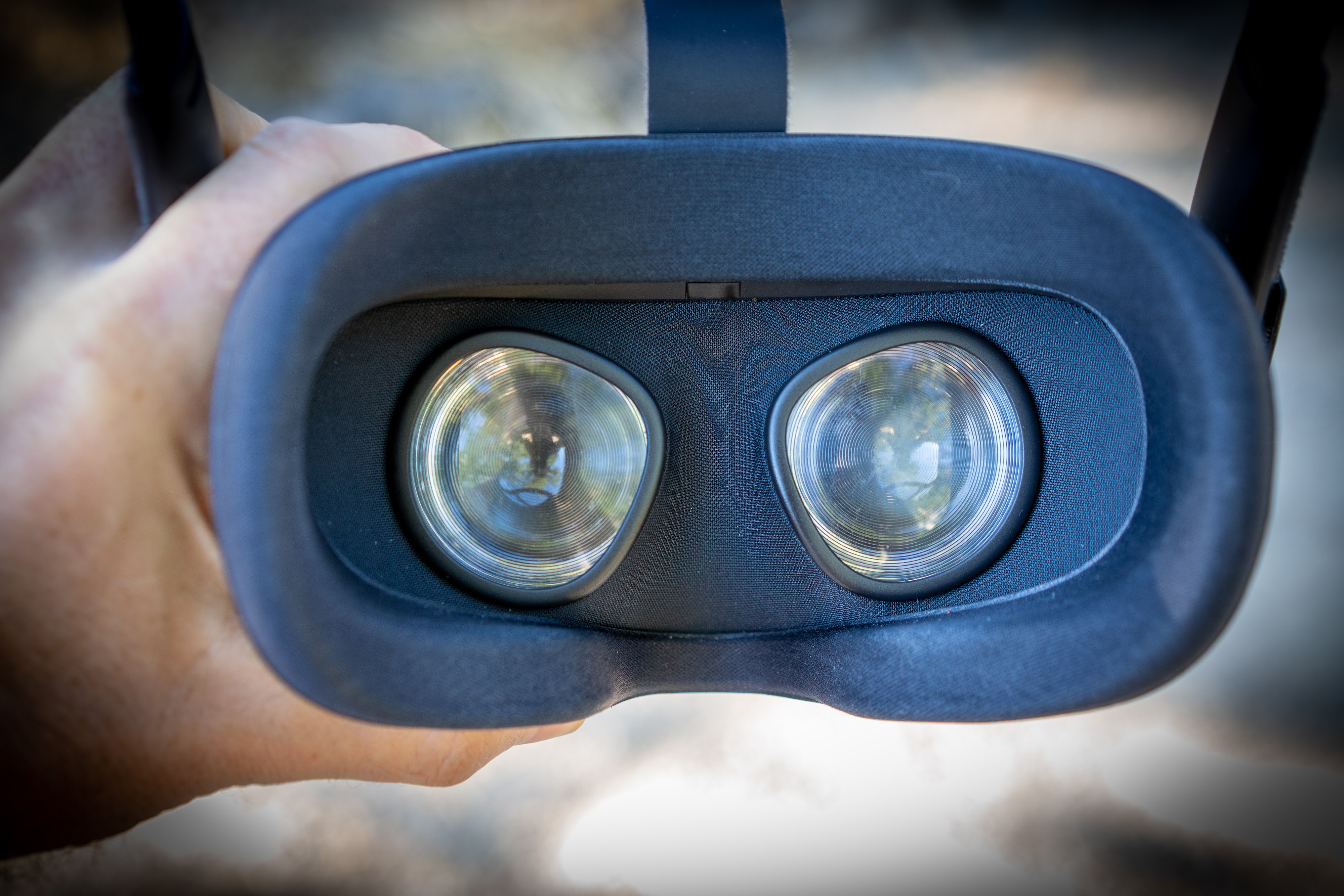
Oculus Quest
What is it?
A standalone, 6DOF VR headset from Oculus, capable of playing many excellent games without needing to be tethered to a gaming PC.
Price
$799 for the 128GB version
Like
Dead simple to use with virtually no setup, high quality 6DOF head and hand tracking, tons of fantastic games, and you can use Oculus Link for higher-end PC VR games.
No Like
A bit bulky and front-heavy which can create neck-strain, field of view could be wider, and the onboard speakers aren't as good as some other offerings.
Hardware
The Quest headset itself weighs about 566.99 g. That includes the 3648mAh lithium-ion battery, which gets you two to three hours of playing time, but there are ways to extend it, which I’ll get to in a bit. It has external speakers that sound ok, but headphones make the experience far more immersive, and there’s a headphone jack on both sides of the device. There’s also a USB-C port on the left side of the device which you can use to charge it as well as transfer data to/from your computer. There’s a physical power button as well as a volume rocker, and on the bottom of the device is a slider that allows you to control the distance between lenses, and it comes with a spacer for those who wear glasses.
The headset has three adjustable straps so you can get a snug fit, which is rather important for games that require a lot of movement. All of the device’s weight is on the front, and while it’s not terribly heavy, the imbalance does start to strain your neck if you’re playing it a lot (but there’s an accessory that helps a lot, which I’ll talk about below). The system runs off the ageing Qualcomm Snapdragon 835, so while it’s not a speed-demon it is capable of running some gorgeous games and smoothly. It has 4GB of RAM, and storage in either 64GB for $600-ish or 128GB for a hundred bucks more. It has an OLED display with a resolution of 1440 x 1600 pixels per eye and a refresh rate of 72Hz, which is quite good by VR standards, but it’s certainly not the top of the heap.
The two controllers ” called the Oculus Touch ” are lightweight, coming in at about 4.5oz (battery included), and they have built-in wrist straps. Each controller has a trigger and grip buttons, a joystick, two A and B (or X and Y) buttons, and a Home/Menu button, depending on the controller. I found them to be nicely ergonomic and highly intuitive. The movement-tracking on them is remarkably responsive and accurate, which adds a lot to the sense of reality. One of the dangers with inside out tracking, though, is that the Quest may lose track of your hand if it’s way overhead or behind you, but that was a very rare occurrence. Each controller uses a single AA battery, and I’d recommend getting rechargeables.
OK, jeez let’s get to the fun stuff already.
The experience
Setting up the Quest is shockingly easy. You put it on, power up, and follow a straightforward tutorial. One of the first things you do is set your guardian. Through the Quest’s cameras you see a black and white version of your room. You then use a controller to paint an outline of your play space on the floor, and the Quest will do its best to keep you within those boundaries via a bright fence that appears if you wander too close. Then you just log in with your Oculus account and you’re good to go.
Because the headset has Wi-Fi built in, you can buy and download games directly from the headset (as well as from an app on your phone or the Oculus web store). And guh, the games”¦ there are so many incredible games.

The first game that really hooked me was Superhot VR, which is a perfect illustration of how much better VR is without wires. Another great example is Echo VR, which is kind of like a hybrid of ultimate frisbee and soccer, except you’re in zero gravity, and fly around with jet packs and by grabbing and pushing off things. It’s an online, multiplayer game, so the computer pairs you up with people and you can talk (shit) and strategize in real-time. It’s also full-contact, so in addition to trying to catch and throw the disc through a goal, you’re also grabbing, blocking, and punching. The learning curve is high, but it’s unbelievably fun once you get the hang of it (you’ll want a high-speed, low-latency Wi-Fi connection, though).
Other games that really impressed me included A Fisherman’s Tale, which is a stunning, scale-based puzzle game, and Moss, which is almost a platformer, but one in which you watch over your avatar (a tiny, adorable mouse) as a spirit, and use your hands to manipulate the world it must navigate. Both games really highlight the magic of VR, and have you interacting in ways you never would with a game on your TV or computer screen.
There are some incredible non-game experiences, too ” like Everest VR, wherein a team hiked a high-end 360-degree camera (actually, an array of 17 cameras) and spherical audio rig up to the summit of the highest mountain in the world. The whole thing was stitched together by Blackmagic (whose cameras we’ve covered before), and it’s one of the most seamless VR documentaries I’ve ever seen. I mean, you literally get to stand on top of Mount Everest and look around!
There’s also some incredible storytelling in VR now, like the award-winning documentary Travelling While Black, which immerses you in the history of the travelling the country as a Black person, or The Key, an interactive story with an emotional reveal at the end has more impact than it would have had you been simply watching it on a screen.
Workouts
And then there’s VR for exercise. Listen, to be completely honest, I’ve been in a pretty dark headspace for much of the last three months, ever since COVID-19 really starting showing what it could do, and worsening considerably after the horrifying police killings. My motivation to get up off my arse and exercise has never been lower. But, I found that I could motivate to play a few video games that would immerse me in another world for a little while, and because it’s VR, those games would get me up on my feet and moving. Then I’d play a rhythm-based game or two like Beat Saber, Audio Trip, Dance Central, or even Pistol Whip (think Guitar Hero, but you’re shooting and dodging bullets on the beat instead of playing a guitar). That would frequently get my heart rate up in the 150 range, and by that time I had some adrenaline flowing, so I figured I’d do something more intense.

And some of the workout apps are very intense indeed. There are several boxing games that absolutely wreck me. Hitting punching bags actually used to be my favourite form of exercise, and these games bring me right back to that. Thrill of the Fight is the most realistic of them, with progressively quicker and savvier opponents. The tracking is so accurate that you really feel like you’re fighting someone. There’s also a Creed game as well as Box VR, which is more of a rhythm-based game, but with punching.
The one that had me consistently burning the most calories, though was Supernatural, which is a Quest exclusive. It’s like Beat Saber in that you’re smashing targets that are coming at you, but it adds in squats and lunges, and everything is coming at you from all angles, so you really appreciate the lack of wires. It’s a subscription-based model, but it has real trainers guiding you through workouts, which are set in stunning, photo-realistic environments, and the soundtrack is fire, with everything from Lizzo to some disco classics. My heart rate hit 180 during an intense Supernatural workout. The net effect is that I can spend an hour just kind of having fun in VR, and progressively working up a sweat, and end up burning 700 calories while I’m at it. That’s not really going to happen with your standard video game consoles.
Online Play
I also really enjoyed the online, interactive component. One of my best friends is an ER doctor in one of the major COVID hotspots in the U.S., and not surprisingly, he’s been under a bit of stress lately. He has a Quest, too, though, and we’ve been able to meet up in virtual spaces and catch up while playing games like Half+Half and Racket: Nx, in addition to the aforementioned Echo Arena. I even attended a Reggie Watts concert in AltspaceVR (basically a VR social media network that lets users interact in different worlds).
It must be said, though, there is still a ton of toxic behaviour in the various chat and multiplayer apps. I heard several n-bombs, homophobic slurs, and saw lots of unwanted sexual behaviour (including avatars pretending to hump the faces people that were just trying to have a conversation). The perpetrators mostly seemed to be teenage boys, judging by the timbre of their voices, but that doesn’t excuse anything, and several of the victims sounded extremely young as well, which gave me the creeps. I reported everything I could, but eventually, I just didn’t want to go back to the chat apps.
Oculus Link
One of the banner features that was added in just the last few months is Oculus Link, which enables you to connect the Quest to your computer, and then it essentially becomes an Oculus Rift S headset, and it’s capable of playing all of the high-end games on the Quest store. The caveat is that you really need a powerful gaming PC to do this, because these apps are very GPU intensive. I have a fairly high-end power-book type laptop (late 2018 15″ HP Spectre 360 with 16GB of RAM), and its Nvidia GeForce GTX 1050 GPU really struggled to keep up with the more intricate games. Oculus has a list of GPUs that are certified to work with Link, and mine didn’t make the cut, so it’s not surprising that there was some lag and choppiness in some games, but generally it was still very playable.
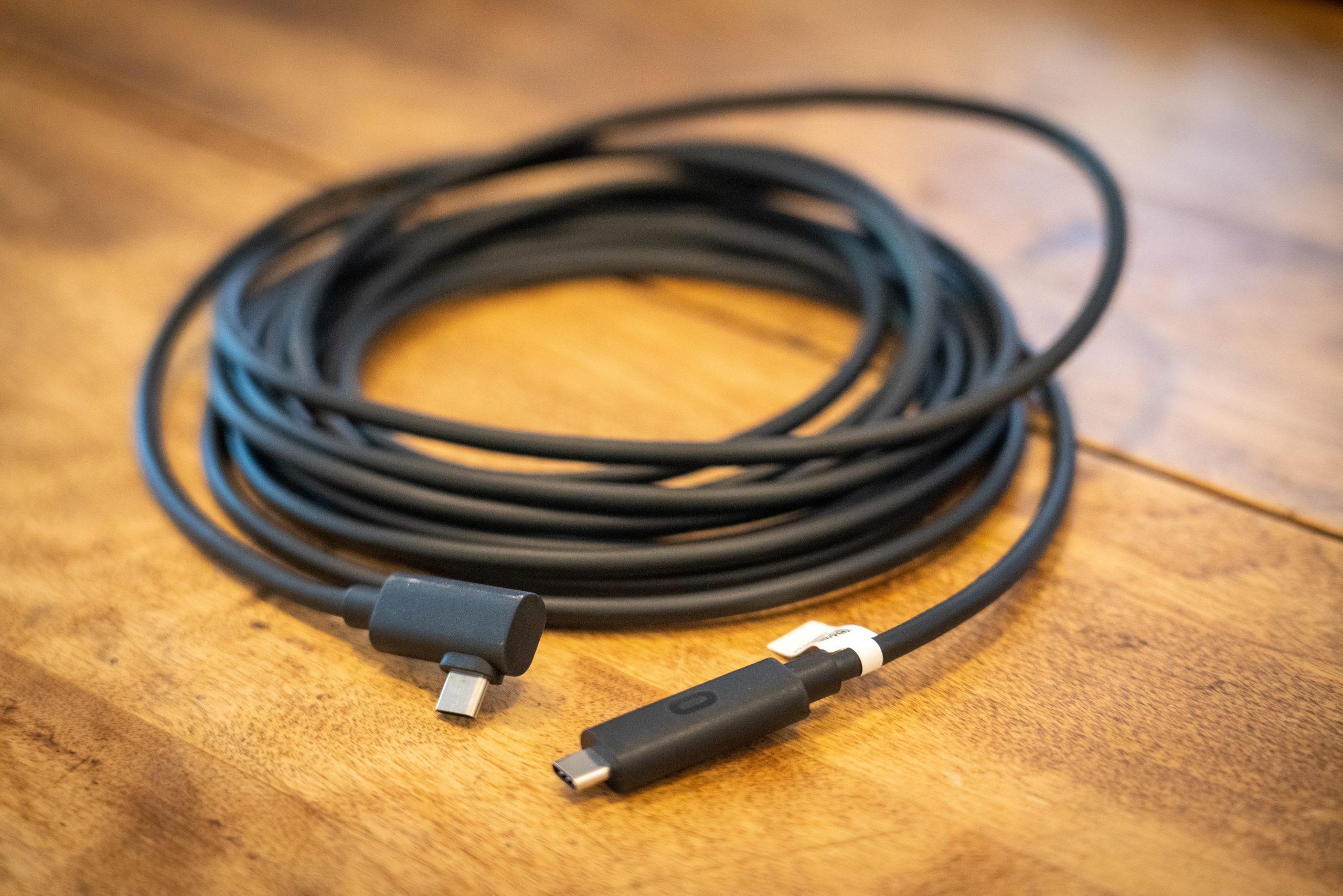
Once you’re in the land of PC VR, the possibilities really expand. The scope of games can be much, much larger. Games like Asgard’s Wrath and Stormland are expansive worlds that feature incredible shading and textures, and they take a very long time to play through (I haven’t finished either). To give you some idea, larger games that you download to the Quest are typically in the 2GB ” 5GB range. Asgard’s Wrath is a whopping 133GB. What’s impressive, though, is that I played some games that are available on both PC VR and the Quest, and they look great. Robo Recall is one of the most fun games on either platform, and without a direct, side-by-side comparison you’d be hard-pressed to find any differences. You really do see them in those side-by-sides, though. Take a look at the following video comparison of the new game Phantom: Covert Ops on a Quest vs on PC VR.
So, yeah, obviously it’s much better-looking on the PC, but the thing is, if I hadn’t seen that video I wouldn’t have known that I was missing anything. It still looks great on the Quest and it’s plenty immersive, and it’s just so much nicer to not have that damn cable.
I can’t talk about Link without talking about Half-Life: Alyx. It’s being hailed by many as the best VR game ever, and yep, it’s hard to disagree. Alyx is a Valve exclusive, but if you’re using the Oculus Link you can play games via the SteamVR app on your PC, so I shelled out the 60 bucks for it, and damn it was worth it. The game is so detailed, and so well, thought-out. It was clearly made with VR in mind, and everything is seamless. You can hear things creeping up behind you, you can feel the terror as a face crab leaps right at you. There are levels that you have to navigate by flashlight. It’s more than eight hours of gameplay and it never feels repetitive. My laptop definitely struggled with this one, and so I suffered frame-rate problems, but the game was good enough that I just kept going anyway. It really is worthy of all the hype.
Hand Tracking
A couple of months ago, official support for hand-tracking was added to the Quest. When in the Quest home world, and in games and applications that support it, you can put down the controllers and manipulate the world with your hands alone. It’s extremely cool and it feels very futuristic when it works right. But you really need to have plenty of light, because it’s going off what the Quest’s cameras can see (whereas the remotes have invisible light emitters that aid tracking). The game Elixir, which has you mixing potions that do different (weird) things to your hands worked extremely well. In contrast, I found Waltz of the Wizard and The Curious Tale of the Missing Pets to be extremely buggy and frustrating.
This is still a new feature so there aren’t many games that support it yet, but I’d expect that number to grow quickly. If future versions of the Quest have more cameras (or at least more sensitive cameras) I think that will go a long way toward making hand tracking a better experience. It is pretty cool to be able to see each individual finger move and to pick up objects in a virtual world.
Unintended Usage
I’d be remiss if I didn’t talk about Sidequest. Oculus has some very strict specifications for how apps must function before they’re allowed into the Quest Store. This keeps the quality high, but it’s also somewhat limiting. Sidequest is essentially a platform where non-sanctioned apps can be sideloaded onto your Quest. There are a few hoops you have to jump through with setting up a developer account and installing some software and drivers, but I got it up and running in under an hour.
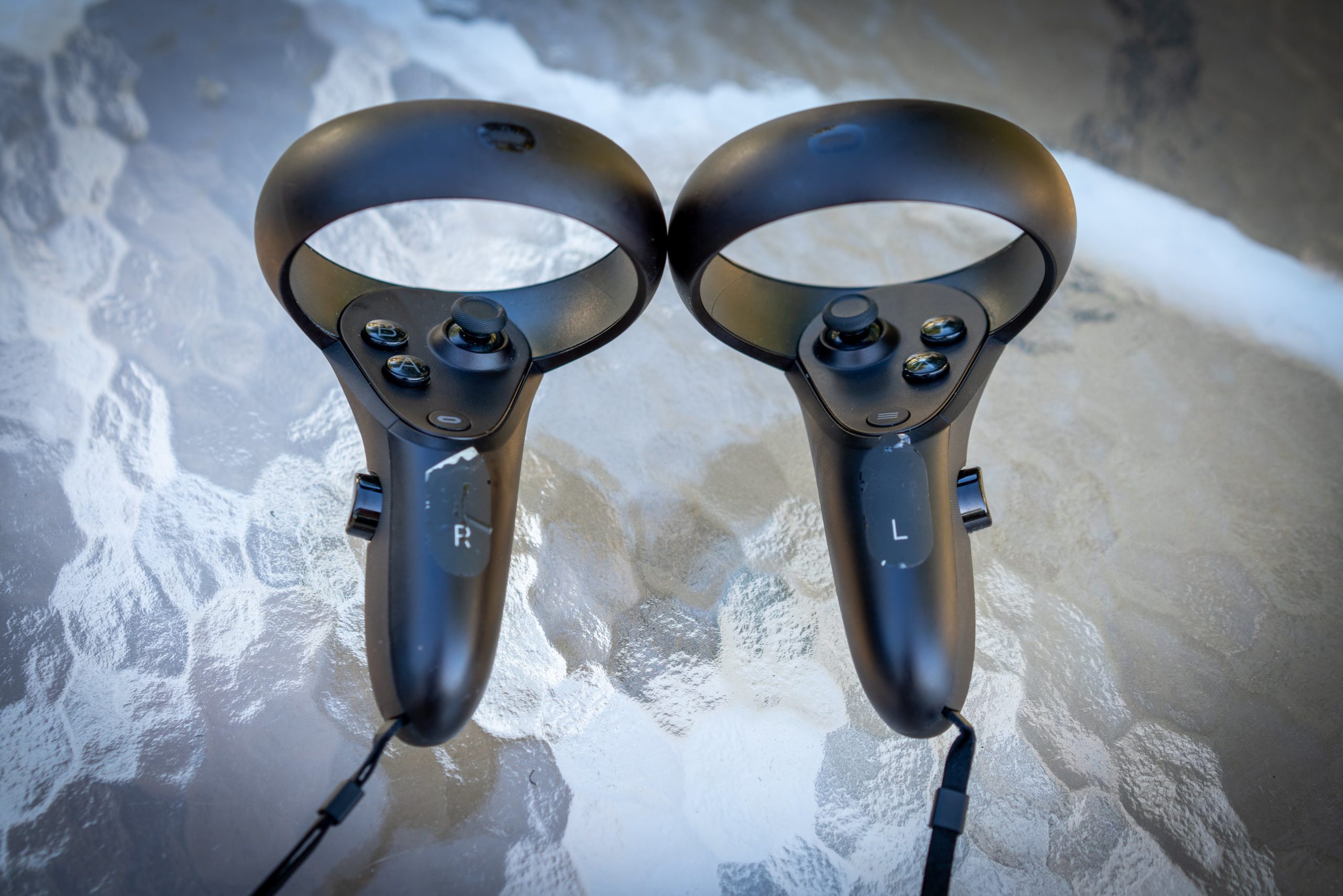
Most of the content on Sidequest is free (though some is donation based, and some is paid software), and a lot of developers use it to beta test the apps they’re working on which will eventually end up in the Quest store. Others seem like weird experiments for the hell of it. In either case, there’s some really interesting stuff in there ” like the first-person shooter game Pavlov Shack and Survivorman (based on the Discovery Channel show of the same name). To me, the most interesting titles are those on the fringe. Tea For God features a procedurally-generated world based on your actual, physical play-space, so you really walk through the labyrinth, and it’s different every time. Cactus Cowboy Portal is essentially a Portal clone, which is interesting, but is as nausea-inducing as you would imagine in VR would be. Flowborne is the best VR meditation app I’ve found, as you put one controller on your belly, and actually use your breath to move you through a beautiful landscape.
Sidequest is also the first step if you want to mod some of the apps you’ve legally purchased from the Quest Store, such as Beat Saber. Obviously a rhythm game that uses light sabers is a great idea, but I really hate most of the music in the stock Beat Saber app. Through Sidequest you can install a mod that enables you to download hundreds of user-generated songs with beat maps, and suddenly I’m in love with the app again.
Oh, and it’s worth mentioning that there is no porn in the Quest Store (Oculus is owned by Facebook, after all), but yes, you can watch VR porn on the Quest. You can simply watch online in your browser. Or for a better experience just use your computer to download your 3D VR porn from wherever you heathens download such smut, use a cable to transfer it from your computer to the storage on your Quest, and then use a viewer like Skybox VR to watch. Or so I’ve been told.
Accessories
There are a fair number of 3rd party accessories for the Quest, and some of them really improve the experience. Here are the ones worth mentioning.
Silicone Cover
$20 to solve two of the biggest pain-points with the Quest is a no-brainer. The Quest’s foam pad that touches your face is soft, but it has a texture, and it’s somewhat absorbent. I found that after long sessions it would actually start chafing the skin on my face, which was really painful, and it would soak up sweat when I was playing more intense games. This silicone cover just goes over the existing face pad. It’s super easy to clean, and it’s waaay softer and more gentle on your face (and it doesn’t absorb sweat). Also, it does a vastly better job of blocking light leaks in the lower part of the visor (around your nose).
External Battery
Pricier at around $90, but this solves another two Quest-specific problems. This external battery connects to the straps of the headset behind your head, which helps to offset the front-heaviness of the Quest. Adding weight seems counterintuitive, but it instantly reduced my neck strain considerably, and it made the Quest better-balanced so it was less prone to fall off during a quick head movement. It’s a 10,000mAh battery, and it ups your playing time from two to three hours to as much as eight, depending on the games (I think six hours is probably more realistic).
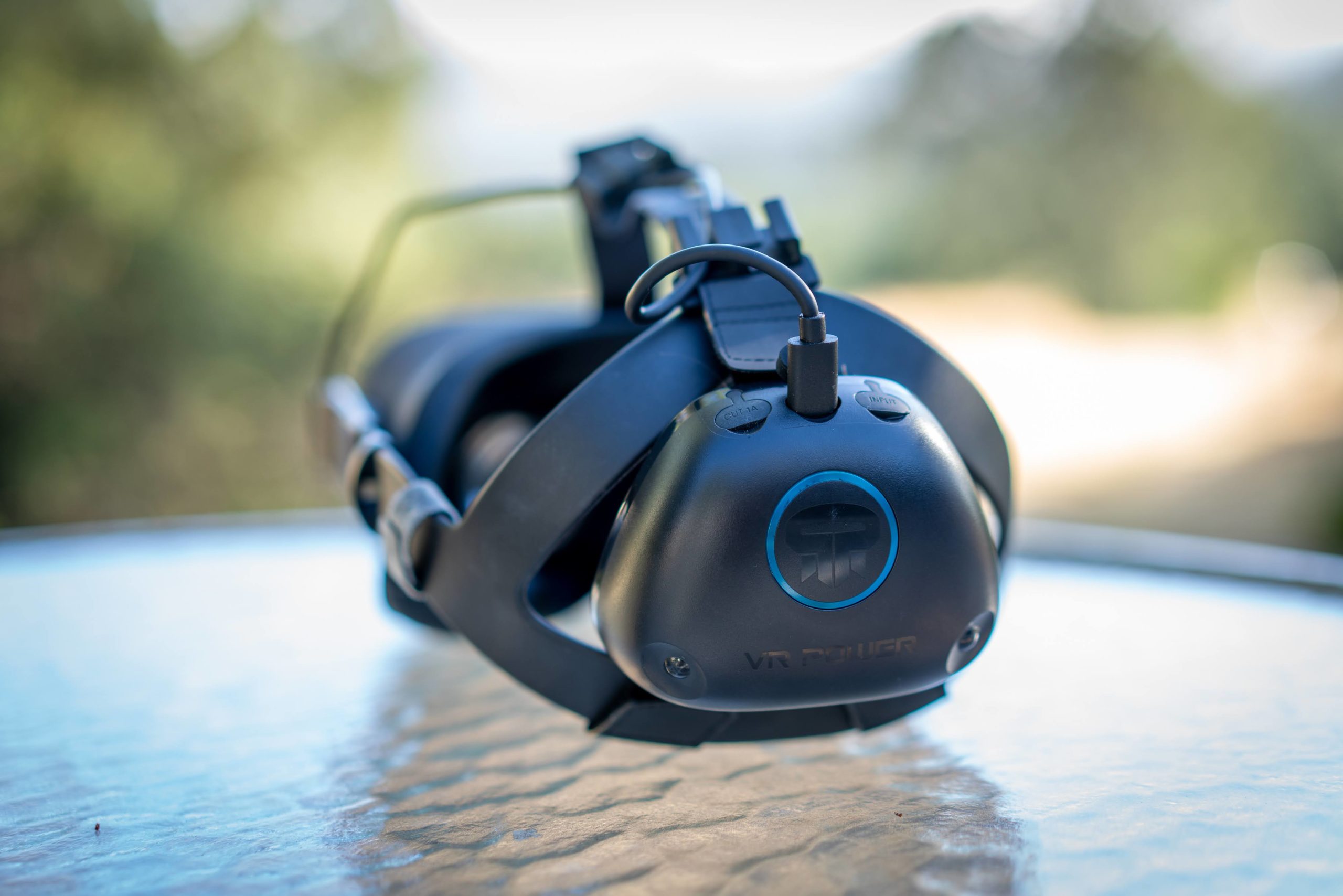
Oculus Link Cable
You really only need this if you have a gaming PC, but if you do, for all the reasons I mentioned above, the Link feature is incredible and opens up a world of graphically intense games. To connect, you’re going to need a cable. The official Link cable from Oculus is lightweight, USB-C to USB-C, and 4.57 m long. It’s also $112, which, ouch. It’s easily the best option, but I did test a cable from Anker for just $30, and I can confirm that it works well. The bigger disadvantages are that it’s only 3.05 m long, so you don’t have as much freedom to move, and it’s heavier so you do feel it pulling on your head some.
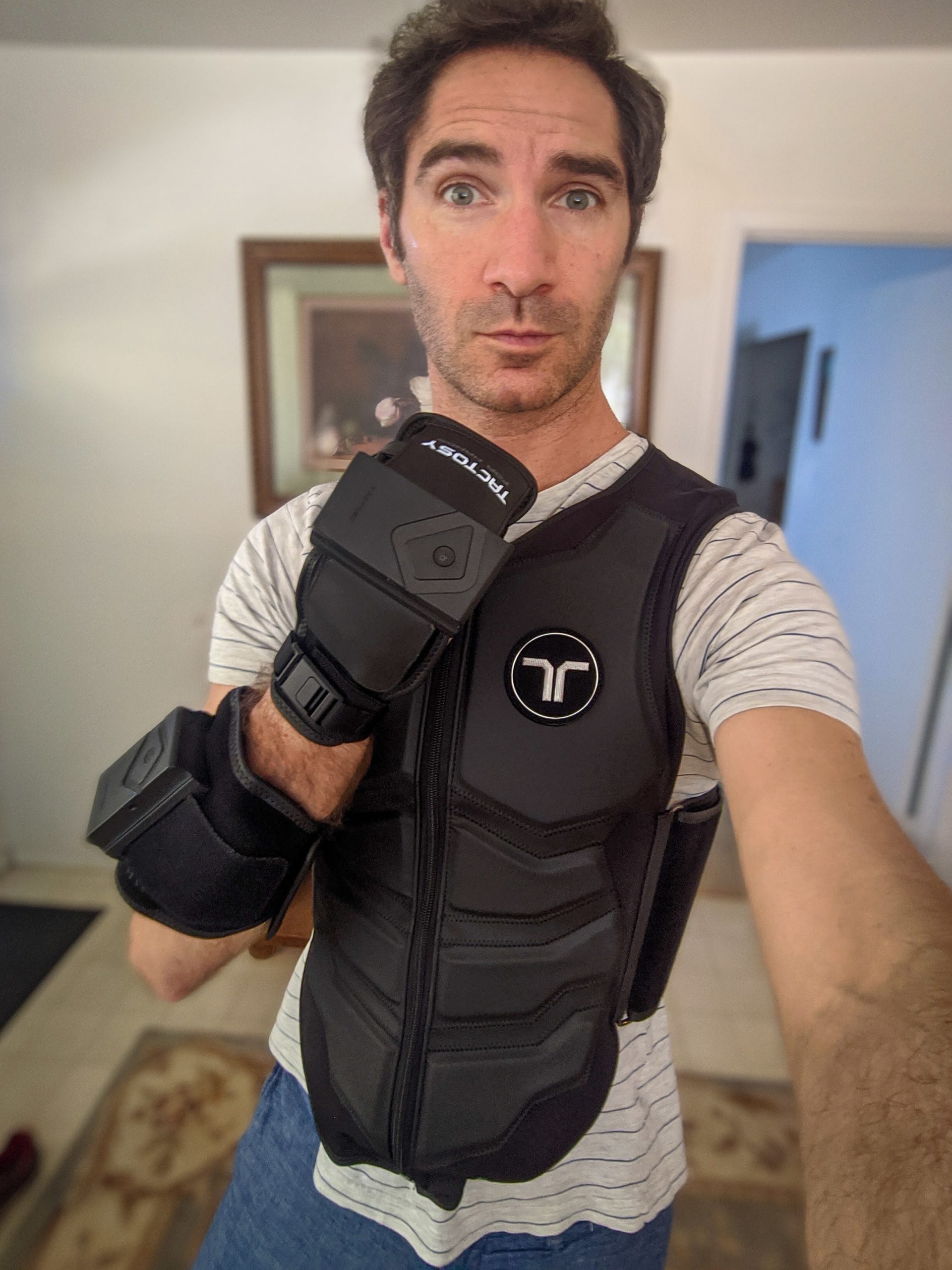
Haptic Feedback Suit
You read that right. The craziest accessory I tested was the Tacsuit from bHaptics. You can get it in pieces, but basically it’s a vest that has 20 vibrating motors on the front and 20 on the back, and there are smaller units available for your forearms, fists, and even face. Putting it on definitely makes you feel like you’re getting into some alpha Ready Player One type rig. It only works with certain games, but when it works it’s effective. In a game like Apex Construct, it’s sensitive enough for you actually feel where you got shot, which not only makes the game feel more realistic, but it can help you play.
Rather than just hearing a shot and seeing your screen flash red, if you feel your back get hit you instantly know there’s an enemy behind you. I was really looking forward to using it in the boxing game Thrill of the Fight, because it lets you feel blocks, punches to the gut, punches you land, and even hits you take to the face. The problem is that the forearm gauntlets and fist attachments add a significant amount of weight, and you really feel it when you’re throwing punches. By the end of three three-minute rounds I could barely keep my hands up and my shoulders were sore for two days. Basically, these are a fun novelty, but they’re very expensive and I can’t say they’re worth the price. The vest is $700, the face piece is $210, the forearm units are $350/pair, as are the hand units.
OK, But Should You Buy It?
Overall, I’ve absolutely loved spending time with the Quest, and I’ve been encouraging more friends to get it, too, so we can play games together remotely. It’s worth noting that one of VR’s shortcomings is that it’s not great for groups in the same room. It really is a one at a time sort of affair. Yes, you can Cast your POV to a TV so others can see what you see, and there are even some games that allow people in the same room to play with you (or against you) on their phones, but generally speaking VR is still largely a solo experience, so if a family has a choice between dropping four to five hundred dollars on a Quest or on a traditional gaming system that can support two or even four players ar a time, well, it’s a tough call.
I will say that it’s a fantastic system for people in quarantine (especially if you happen to be solo). It’s the only standalone system that lets you really explore other places, motivate workouts, and even find solace. The last few months have been extremely high-anxiety and I’ve been genuinely grateful for the escape that the Quest has provided.
That being said, there is definitely room for improvement. Gizmodo’s Joanna Nelius reported that the next version of the Quest is rumoured to be lighter and slimmed down, and that would certainly be a good thing, as would moving the battery to the back of the headset to distribute the weight more evenly. The Quest’s resolution isn’t bad, and the notorious “screen door effect” is minimal, but more pixel density would certainly be nice, as would a higher refresh rate, a newer/faster processor, and more onboard storage. More important than resolution, I’d like to see a wider field of view. Its current narrowness feels a bit like walking around with blinders on, and it really limits your peripheral vision, which makes some games harder to play and really makes everything feel much less real.
The big question is, should you buy this version or wait until the next one comes out, which has begun leaking like crazy. It’s a tough call because we still don’t know when the next version will be available. Rumours point to a September 15th announcement, but it may not hit shelves until later, and we don’t know what the improvements will be yet. Personally, I’d say if you’re still mostly isolated and you’re craving a new and immersive experience, just go ahead and get this version as it’s already really good.
Overall, I love this thing. I’ve used it nearly every day for months now, often for hours a day, and I’m still not bored of it. There’s such a wide variety of apps to play with, and more are showing up every week. It has been exceedingly hard to get one’s hands on a Quest for the last few months, as the pandemic drove demand up through the roof and COVID-19 disrupted the manufacturing/distribution processes. They’re starting to show up in stock again, though, so if you can find one at a good price, grab it. You’ll be amazed at how far VR has come, and it will make you excited for its future.
README
- The first stand-alone VR system that’s actually really good.
- Hundreds of high-quality games and experiences.
- VR without wires is just way better.
- Updates have added controllerless hand-tracking and the ability to connect the headset to a PC for full PC VR games.
- Would benefit from a wider field of view and more even weight distribution.
